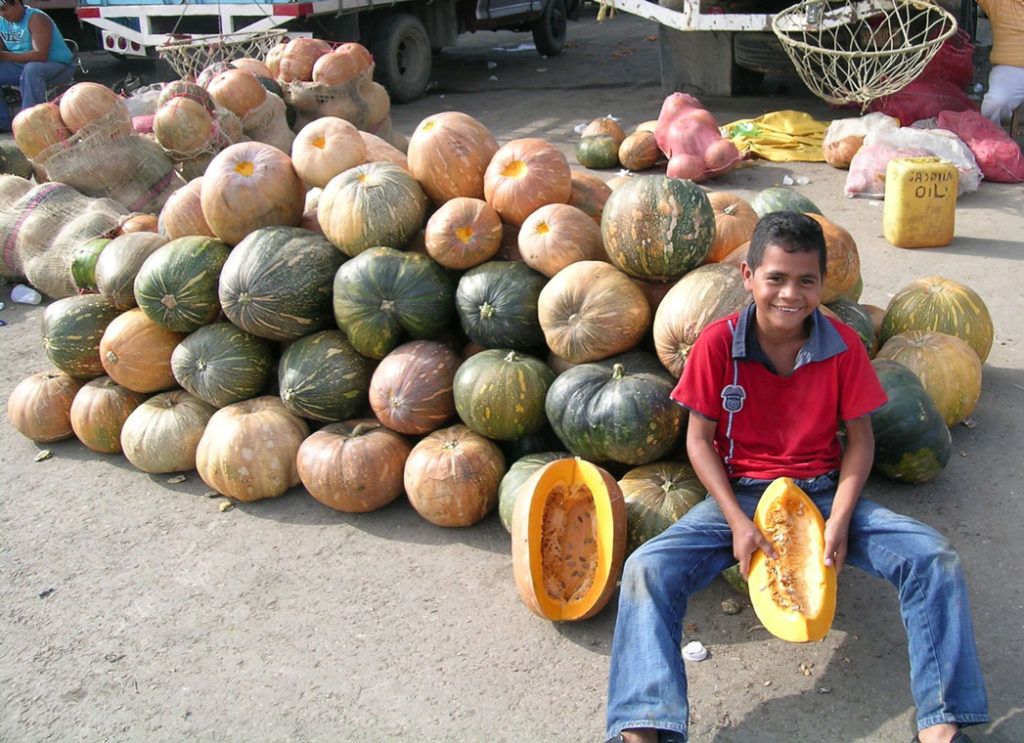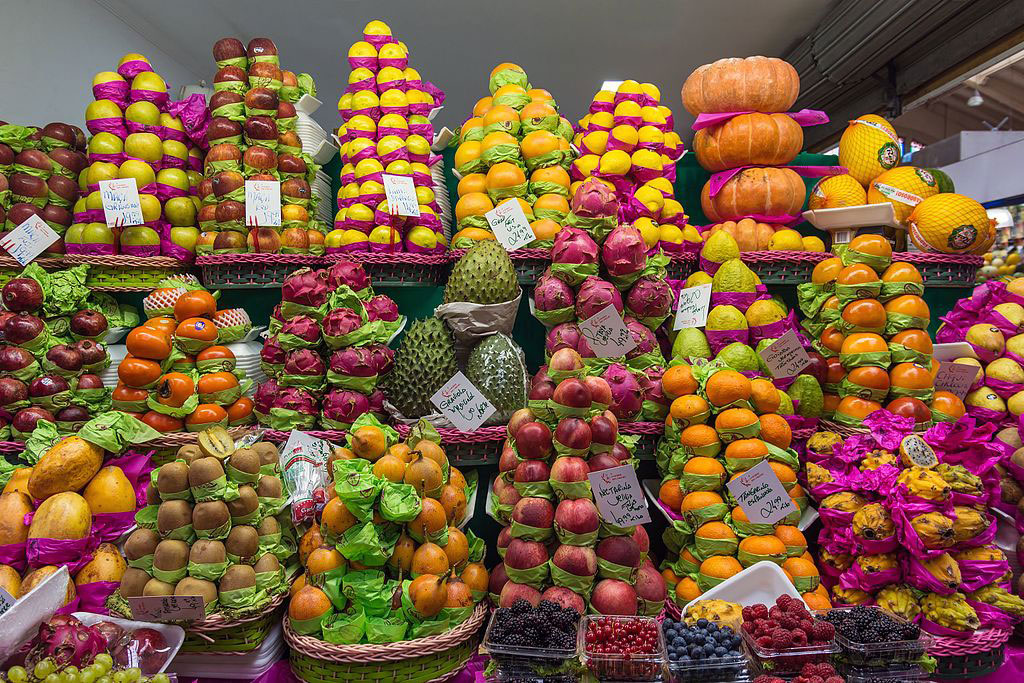When I started work on this project, I thought I knew a lot about squash. I thought I knew (most of all) about the diversity of Cucurbita moschata species squash, the easiest to grow in my home garden. I’ve grown five or ten different moschata types over the years, as well as butternut every year. But when I began to look into the origins of C. moschata in South America, I got schooled about a squash with a very rich culinary and agricultural tradition that I knew nothing about: calabaza. It really blew my mind, then, to find a calabaza a mile or two from my house in a major chain grocery store. Live and learn!
Calabaza or West Indian Pumpkin is a C. moschata squash species type widely eaten in the Caribbean, parts of Central America, South America, and Mexico. Calabaza is just the Spanish language word for squash. But this is the real thing! Calabaza is more closely tied to the original wild ancestors of squash than most of what we eat, and improved by South American farmers for centuries. In Latin American and Caribbean markets, calabaza are cut into big bright wedges, wrapped and weighed for sale.

Photo credit: Frank Mangan, worldcrops.org .
In the garden and at harvest, calabaza is quite diverse in shape and size, even within a single farmer’s field. Calabaza are usually roundish, like a large buttercup or pumpkin, with varying shades of dark green and orange coloration. They can also be squat and buff colored, like flattened pumpkins or wheels of cheese. It’s October 25 as I write this, and I just found a Caribbean Calabaza in a Publix Supermarket with this latter shape. It was grown in Costa Rica, and it’s delicious.
West Indian Pumpkin Recipes – Calabaza Recipes
Wondering how to cook West Indian Pumpkin? Need a calabaza recipe? A good one tastes great using my master recipe for halved, baked squash. Because the flesh tends to be dense and hold up well, calabaza is very good in any pumpkin or squash stew recipe. A softer squash might fall apart into mush during long cooking, but calabaza will hold its shape and absorb flavor, like a yam or potato would. Check out my spiced squash stew recipe, topped with yogurt, pomegranate, and pistachio for lots of flavor and texture.
Throughout South American, Central America, and the Caribbean, each country has a distinct national recipe using these squashes.
- Picarones or sopaipillas are pumpkin donuts from Peru and Chile.
- Carbonara, a nationally revered beef stew in Argentina and Uruguay, features calabaza in most recipes.
- In Colombia, Venezuela, and the Dominican Republic the word for these squashes is auyuma. It’s often prepared as a soup with onions, cream or fresh cheese, and other ingredients.
- In Haiti, soup joumou, made from calabaza and spices, is eaten every year on January 1 in celebration of the Haitian liberation from the French. The colonizers considered the squashes too valuable and delicious to allow it for use by their subjugated Haitian workers. I like the wikipedia entries “with issues” the best and soup joumou has a wonderful entry.
- In Paraguay, kivevé is a hot cereal made from squash, cornmeal, sugar, and cheese. It was a staple food of the native Guarani people before colonization.
- In Guyana, calabaza is a prevalent staple food as a side or a vegetarian dish with roti. Guyanans also make a squash and cornmeal-based dessert bar (pone).

Credit: Wilfredor, via Wikimedia Commons
You need at least 100 warm to hot days to grow calabaza in your garden. Otherwise, grow it the same way you’d grow butternut. The seed for calabaza is harder to find than most. Check out my seed-shopping posts where I point out a couple of sources.
